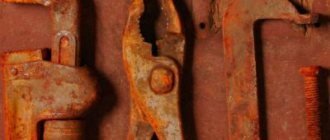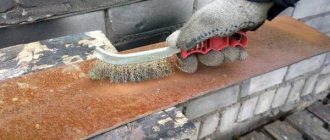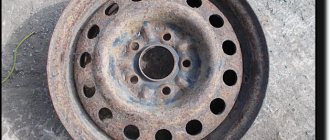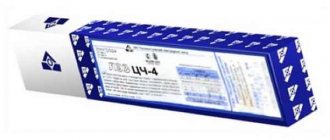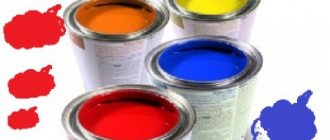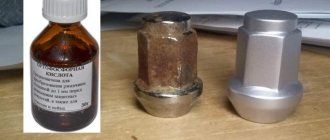Preventing corrosion on stainless steel
Well, we have cleaned up the corrosion, our steel is now like new. But what can be done to prevent contamination from happening again? For this, there are such means as: rust converter , anti-corrosion compounds and many other chemicals, the names of which speak for themselves. After application, they create a protective film that prevents further corrosion.
There are different types of chemical coatings for different types of metal and stainless steel. After application, objects can be coated with varnish or paint.
Source
Cleaning products
Most often, stainless steel products can be found in the kitchen and bathroom. Dishes, sinks, hoods, stoves, etc. are made from it. The combination of attractive appearance and practicality has made the material one of the most advanced on the market, but in the absence of proper care, its advantages will be invisible.
Stainless steel cleaner: store-bought products
Manufacturers of detergents and industrial products have not forgotten about stainless steel and have produced entire series to care for it. A wide range of polishes, foams, cleaning liquids, sprays, etc. are on sale. You can choose any at your discretion, the main thing is to strictly follow the attached instructions for use.
To remove dirt from the surface, you can use plain water, a soft sponge without abrasive particles, and regular dishwashing detergent.
You can use glass cleaner to remove fingerprints or water stains. Simply spray a small amount onto the surface and wipe thoroughly with a microfiber cloth. Rinse off residue with clean water and buff dry with a clean cloth. Excellent results are guaranteed.
How to wash stainless steel until it shines: folk remedies
It is not at all necessary to use industrial products for care; there are many ways to clean and polish stainless steel parts that were actively used decades ago. The most popular among them:
- To remove heavy stains, use a solution prepared from hot water and mustard powder. Using a soft sponge and this product remove almost all types of dirt. After using the mustard solution, remove the residue with clean water and wipe the surface dry with a clean rag.
- To remove white stains from water, it is recommended to use acids. Acetic table acid or lemon are ideal for these purposes. Steel products are wiped with a soft cloth soaked generously in vinegar or concentrated lemon juice. The residue is then washed off with water and the steel is wiped dry.
- If the stains are old and have already dried, then soda paste will come to the rescue. To prepare, mix a small amount of baking soda with water, then apply it pointwise to the stained area and leave for a while. After at least half an hour, dirt can be easily removed using a cleaning cloth.
- To clean a stainless steel pan in which food has burnt, you need to boil a small amount of water in it with 2 tsp. soda After this, burnt-on food remains can be easily removed using a sponge and dishwashing detergent.
- If stains or stains have formed on forks, spoons or knives, you need to wipe the surface with concentrated lemon juice, and then brush with toothpaste.
- To restore the products to their former shine, they are immersed in water in which the potatoes were boiled shortly before. The products are kept in the solution for at least 2 minutes. Afterwards, they are taken out and wiped dry with a soft rag, without first rinsing them under running water.
- To prevent the formation of white water marks on the steel surface in the future, they should be wiped off soon after use. You should not give them the opportunity to dry out on their own.
- You can polish the products with ordinary mineral or baby oil. It will create a protective film and add shine to the steel surface. Some housewives prefer to use car polish.
Regular and high-quality care of stainless steel products makes the process not labor-intensive. By following all care recommendations, you will be able to maintain the attractive appearance of steel for a long time.
How to remove rust from stainless steel at home
To begin with, a discouraging fact: stainless steels do not exist in nature. This is exactly how absolutely all types of steel rust. And stainless steel is popularly called a group of corrosion-resistant steels (as they are correctly called in a professional environment).
Steel corrodes (rusts) with the formation of a red coating on the metal surface
Corrosion is the destruction of metal as a result of environmental influences. The environment can be either simple atmospheric air or concentrated sulfuric acid.
Corrosion can be electrochemical and chemical. Electrochemical corrosion is the same corrosion that we see around us: rusting of steel, white coating on aluminum and green coating on copper, darkening of stainless steel. The average person practically never encounters chemical corrosion in everyday life. It usually occurs at a temperature of 500-600 degrees in dry environments (dry air, carbon dioxide) and liquid non-electrolytes. The rate of chemical corrosion increases with increasing temperature, shock loads, exposure to radiation and electromagnetic fields. We will not consider it.
Parts covered with corrosion lose their strength, because corrosion spreads not only over the surface, but also deep into the metal - this is called intercrystalline corrosion.
If we talk about corrosion in very simple terms, then ions of salts (acids) found in the environment fly up to the surface of the metal and bite off a piece of it. And the newly formed compounds are the same coating (red, white, green) on the surface of the metal.
There are several ways to protect against electrochemical corrosion:
Application of electropositive (sometimes noble) metals to the surface of parts.
Noble metals do not allow salt ions to pass through to the steel, but as soon as even a small crack appears, corrosion, on the contrary, accelerates several times.
Application of coatings of metals capable of passivization in a corrosive environment, i.e. create a film that reduces the corrosion rate by several and even tens of times.
This coating works even if its integrity is damaged.
The third is the use of dielectric coatings that separate the electrical pair.
The most striking example of such a coating is the painting of parts with enamels.
Fourth, the introduction of additives into the material that help reduce corrosion (corrosion-resistant materials).
Stainless steel is the most optimal, but also the most expensive solution for protecting parts.
In order for steel to become resistant to corrosion, it must contain at least 12% chromium. At this value, its ability to resist corrosion increases abruptly.
The chromium chemical compounds contained in steel form a film on the metal surface that prevents corrosion. This type of protection is called passive.
Adding nickel to steel also increases corrosion resistance. Nickel compounds repel salt ions, which increases resistance to sulfuric, phosphoric and other acids. This type of protection is called thermodynamically active.
One of the best corrosion-resistant steels is 12Х18Н10 (18% chromium and 10% nickel). This type of steel is sometimes mistakenly called food grade stainless steel, and sometimes called medical grade. In fact, much less expensive steel with a chromium content of 13% is used for surgical instruments and utensils; there is no nickel in it at all.
Stainless kitchen utensils are made from steel 08Х13 with a chromium content of 13%
According to corrosion resistance, steels are divided on a ten-point scale. If the corrosion rate:
- less than 0.001 mm per year, then this is “Perfectly resistant steel” with 1 point;
- 0.05-0.1 mm per year - “Persistent” with 5 points;
- more than 10 mm - “unstable” with 10 points.
For example, the resistance of “food grade stainless steel” 12X13 is: 5 points in 5% concentration nitric acid, 10 points in 10% sulfuric acid, 7 points in 15% acetic acid. That is why shish kebab must be marinated in enamel, not stainless, dishes - otherwise it will become covered with a dark coating.
So how to remove dark deposits from stainless cookware?
If the cookware manufacturer is unscrupulous and adds little chromium to the stainless steel, and also if your cookware is used in fairly harsh conditions, then the appearance of a dark (almost black) coating is just a matter of time. This dark coating is oxidized chromium compounds. In general, chromium compounds are very strong and chemically resistant. Therefore, let’s say right away, no amount of chemicals can remove this blackness. Moreover, the use of chemistry, on the contrary, will increase the blackness, since the chemistry will promote the oxidation of chromium.
A dark coating on stainless cookware appears either from low-quality steel or from improper use of kitchen utensils.
Rust removal methods
If, nevertheless, stainless steel becomes corroded for one of the reasons given above, this can be corrected in several ways.
Cleaner
Yes, the easiest option comes at the beginning. To remove rust from the surface, any liquid cleaner designed for such purposes will do. It is liquid, because if you use abrasive or powder products, there is a risk of damaging the steel itself, which will lead to the appearance of new rust spots.
Lemon juice
Lemon juice is suitable for removing minor dirt or pitting.
- You need to rub the affected area with lemon and wait a while.
- Then wipe with a napkin or rag.
If the rust is not completely removed, the procedure can be repeated.
Soda
Baking soda is also suitable for cleaning small rust stains. For this method you need:
- mix soda with a little water and add a few drops of lemon juice;
- Rub the resulting mass onto the area with rust and wait from several minutes to several hours, depending on the severity of the contamination;
- then wipe with a sponge or soft cloth.
You can repeat the steps if traces of corrosion still remain on the surface of the stainless steel.
White vinegar
For large areas of stain, it is best to soak the stainless steel item in a container completely filled with vinegar. For small stains and spot stains, the part can simply be wiped with a cloth heavily soaked in vinegar.
- Wait until the vinegar and rust react (this can take up to several days).
- Remove remaining acetic acid along with rust.
It is best to do this with a hard, but not iron sponge.
Kerosene
To clean with kerosene, you need to pour the liquid into a container into which you can lower the stainless steel product.
- If the rust is spotty or the stain is small, you can keep the steel in kerosene for about a day, but if the contamination is large, then the period can reach a week.
- After a long bath in kerosene, the metal should be wiped with a sponge or rag and rinsed well with running water.
